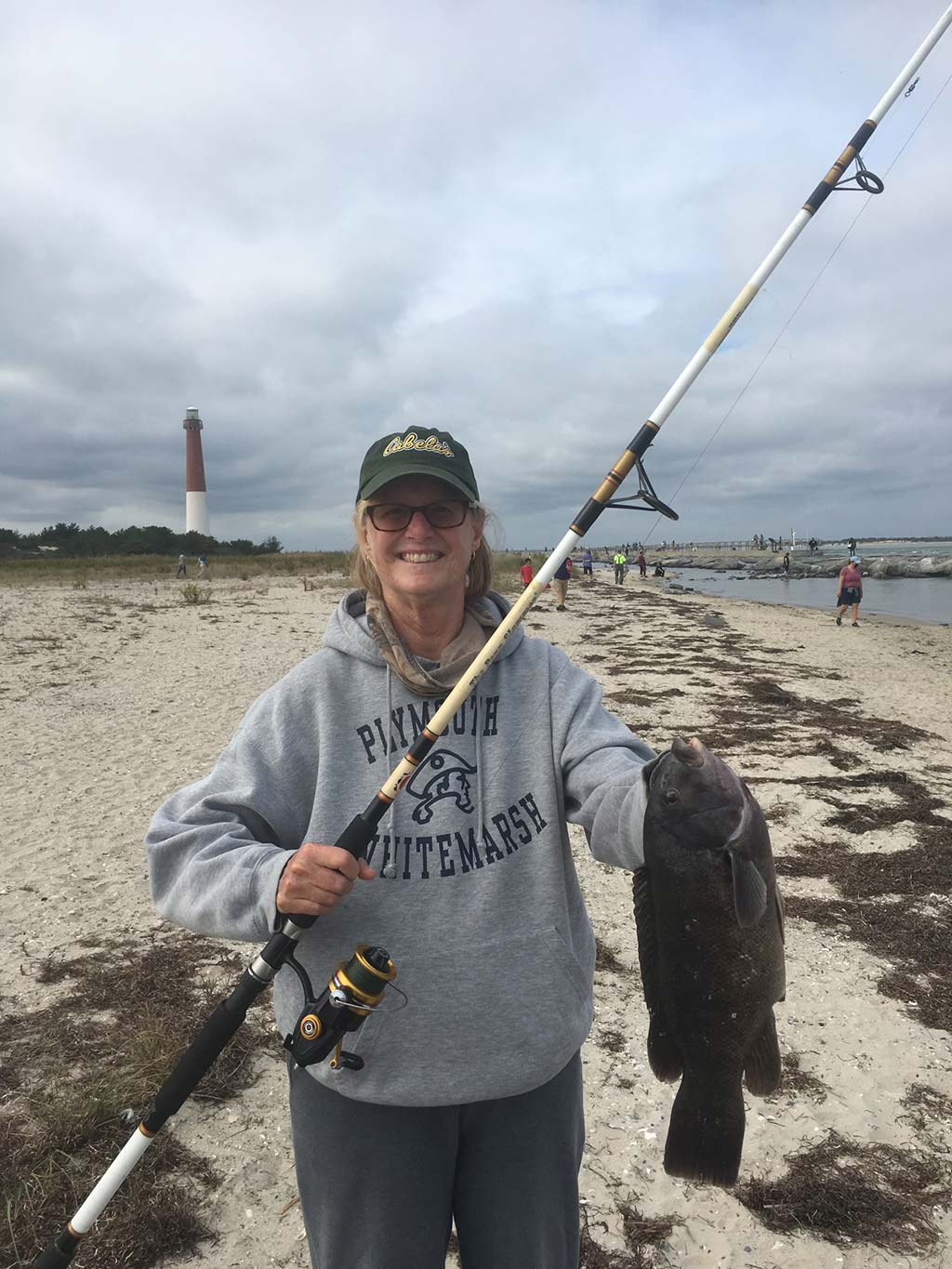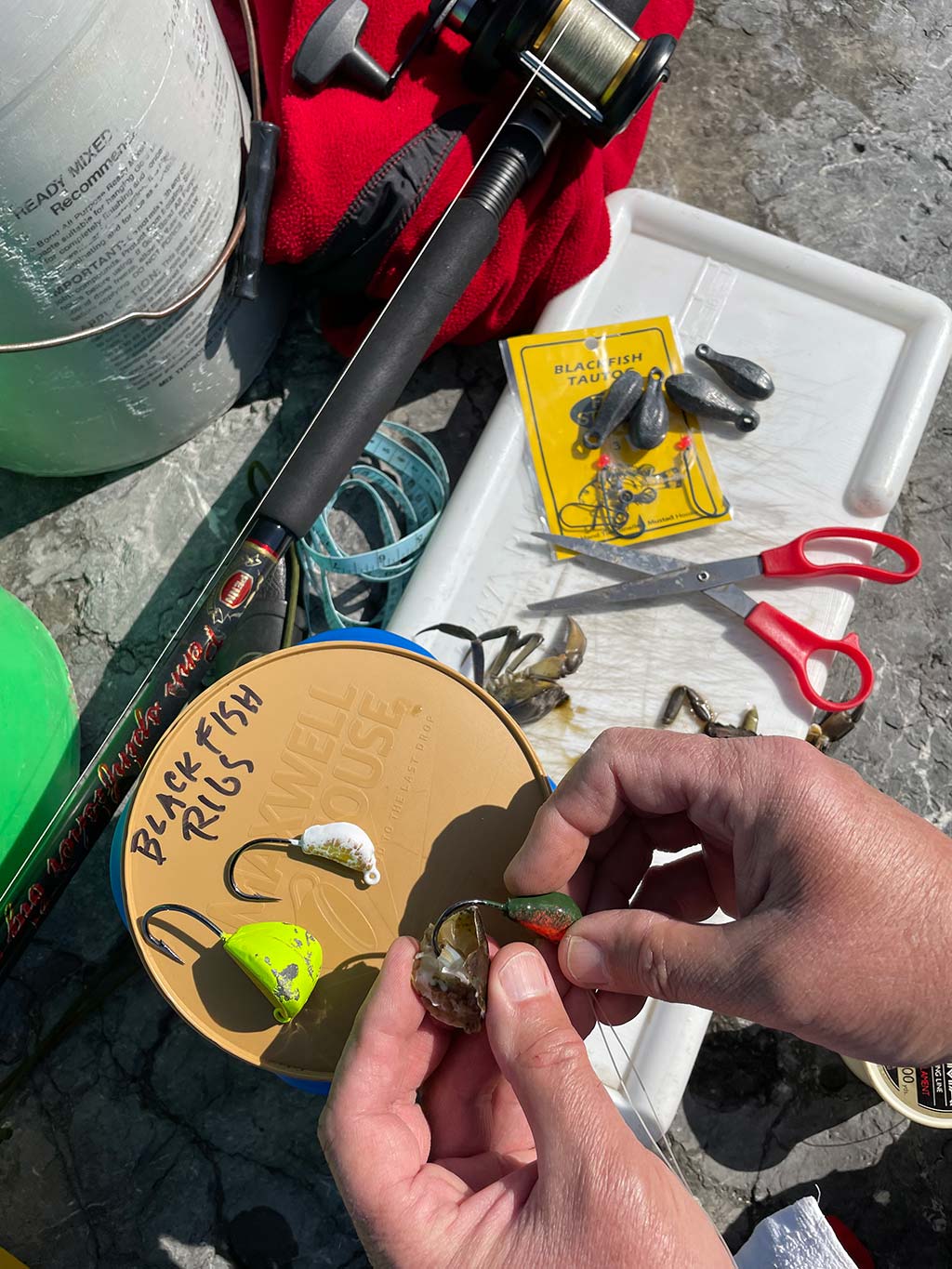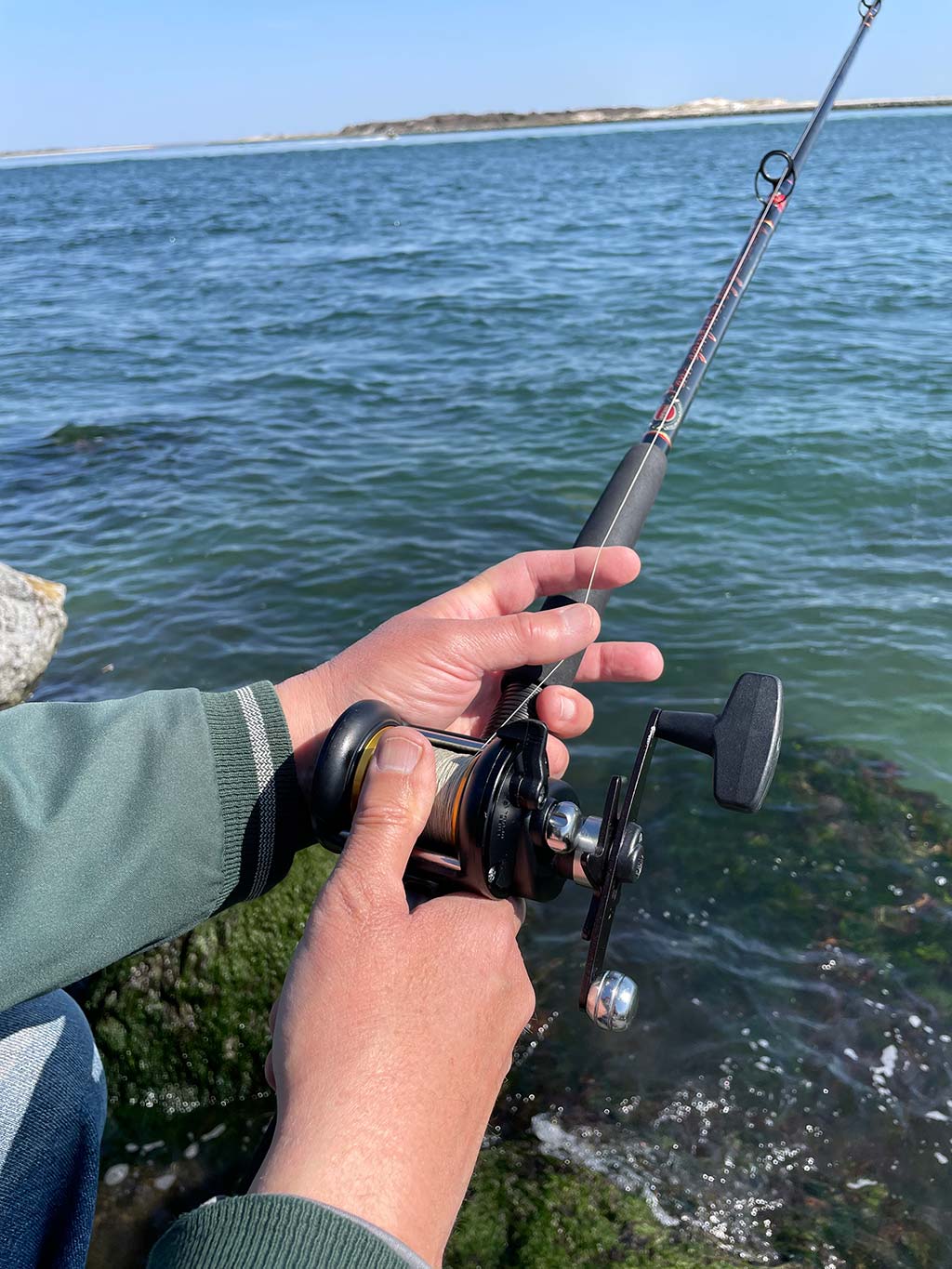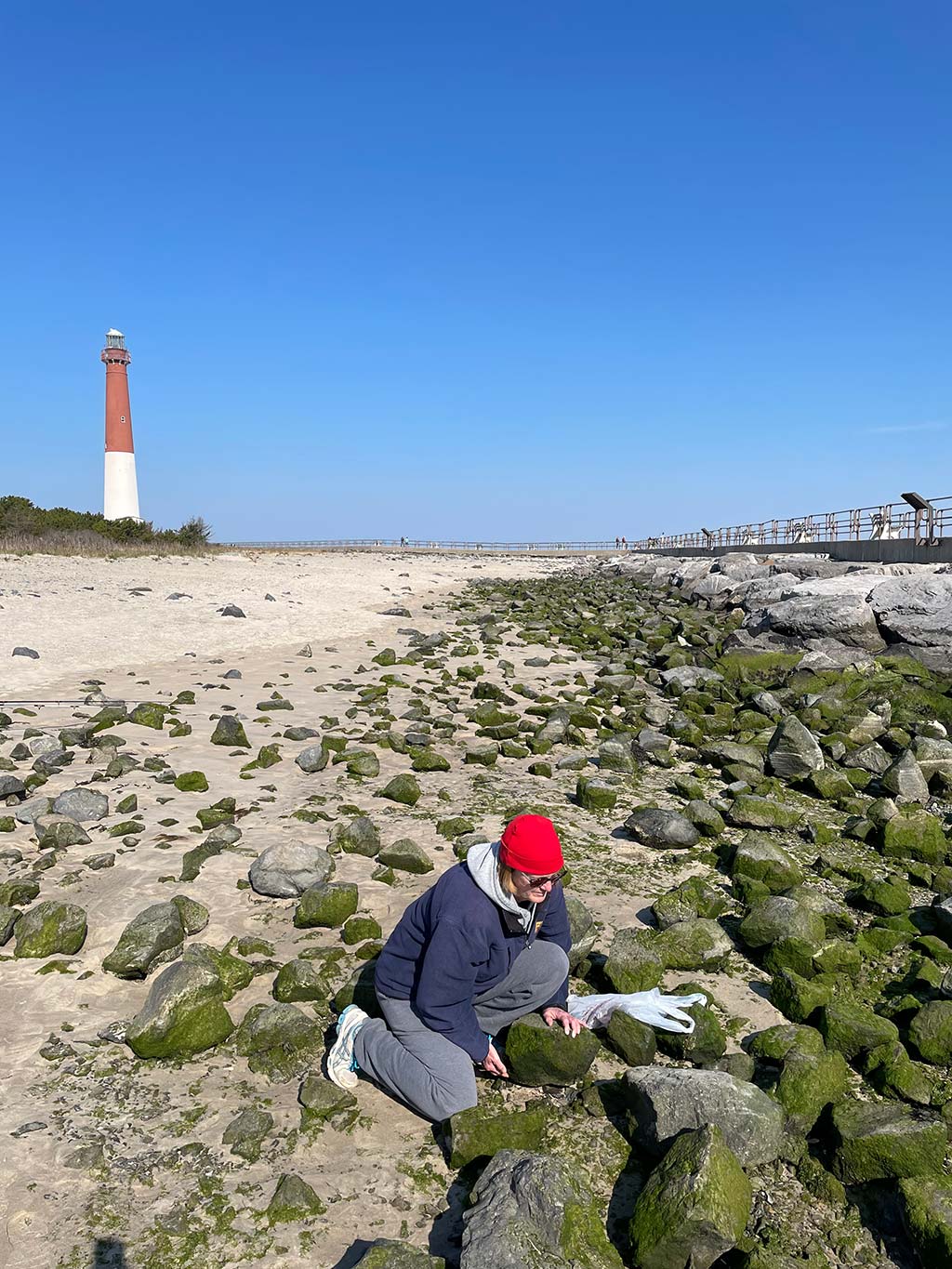
The August 1 return of a single blackfish for the bag is perfect for Jersey jetty jocks.
Inlets to me are sacred grounds, and I always try to make at least a few trips there every season. So much water bottlenecked and pushing from ocean to bay, river or estuary, then back again with the change of tide. Fishing there gets you back into the rhythm of Mother Ocean, and away from society’s time clocks.
Here in my home state of New Jersey, the blackfish season opens up again in August, even though the limit is only one fish at 15 inches. From now until November 15, when the bag limit goes up to four, it’s prime time to hit a tidal jetty, bridge or rock-laden inlet, in quest of a keeper tog. Most fishermen would scoff at a one-fish bag limit, and most wouldn’t target blackfish or plan a trip for them this time of year. Too bad, cause they’re missing out on a whole lot of fun, not to mention some banging seafood dinners for their efforts.

High Water, Low Impact
August, September and October are great months for any saltwater angler in the Northeast. All popular warmwater species are at their peak, and the water, especially in the ocean, is at its warmest and clearest. But south winds can blow hard, nor’easters pop up, and hurricane season is also at its peak. Boat or surf fishing isn’t always a viable option.
That’s when you seek out a rockpile in the lee of the wind and rise to the challenge of nabbing a keeper tog from the rock-steady shoreline. If you’re expecting instant action and double-digit weigh-ins, save your blackfishing for cooler waters and party boat or charter trips. But if you’re looking for a low-impact, change of pace outing, summer and early fall blackfishing will scratch that itch.
You may have to wade through some resident rat blackfish before catching your first keeper, but that’s part of the fun and challenge. Conditions may be off, like too many weeds, or water too cloudy or stirred up. But going fishing is about stacking the odds in favor of success, so the following are some noteworthy nuggets I’ve picked up over the past few one-stop tog seasons.
My most successful trips have come at high water. From the last couple of hours before the high tide mark, through the slack water, until the ebb tide starts flowing too fast, these are top-notch times for inlet tautog. The fish have more rocks to hunt and they don’t have to fight strong currents. Pickings are easier and more plentiful. Bigger, keeper blackfish are on the feed. Once the current starts back toward the ocean, the warmer, tinged bay water often brings eelgrass, cabbage, rockweed and various other detritus to the mix, fouling your line and deteriorating fishing conditions.

Local Fishing Intel
Vince Chiaro is the curator of Bobbie’s Boats in Barnegat Light, my go-to inlet for land-based blackfish forays. In addition to boat rentals, Vince’s shop stocks green crabs, blackfish rigs and freely provides local fishing intel. He’s more a fan of tog location than tidal movement, maintaining that blackfish will forage throughout the day and all phases of the tide. I’ll have to concede he’s got a great point. When the water’s warm and clear, I’ll sometimes snorkel the ocean side of Barnegat Inlet’s north jetty, and sure enough, blackfish are stacked off one particular boulder, while other rocks are left to snapper bluefish and spider crabs.
The lesson here is run and gun on the jetty. Give a spot for 10 minutes or so, then move on until you find some action. One word of caution here: use good footgear. Boots with good tread at minimum, while Korkers or spiked footwear are even better and most advisable. Leave bare feet and flip-flops to the tourists. Always strive to traverse on dry rocks, please. Wet rocks and their accompanying moss are slick as ice. And those boulders can hurt!
All that foot movement means keeping tackle to a minimum. One rod works for me. I’ve come to favor a 10-foot conventional outfit for a few reasons. Because a conventional, star drag reel is on top of the rod, you can feel the line with both thumb and index finger while waiting for the characteristic tap-tap of a blackfish bite. The longer rod lets me flip, rather than cast, my crab bait rig or jig into the potential strike zone. Spinning outfits also work, something in the Penn 5500SS range, but I still recommend a longer rod, 9 feet or longer. Graphite composite rods offer increased sensitivity and the oomph to wrestle stubborn blackfish up from their rocky lairs.

Scratch, Scratch, Boom!
My perfect set-up while waiting for a bite is to keep the rod slightly above horizontal, my line almost straight down the water column, with enough weight to keep my rig from drifting on the bottom. In the sticky, rocky, mussel-infested territory of the blackfish, the less your weight and rig drift, the less you get hung up.
Braided line is certainly the way to go for inlet and jetty blackfishing. Increased sensitivity and its non-stretch factor, combined with a graphite rod, creates an unbeatable combo. Braid around 30-pound test is a good compromise between strength and diameter. I like to use about a 6- to 10-foot mono or fluorocarbon leader of the same 30-pound test as my running line, or even lighter, down to 20-pound test. Mono-type leaders are more abrasion resistant than braid, important in craggy blackfish haunts. Keeping them at or slightly lower test than your running line will ensure your leader breaks – rather than your running line – during the inevitable snag. If you’re not snagging bottom occasionally, you’re not blackfishing!
So you’ll need to carry extra rigs, jigs and weights out on the rocks. If your pockets aren’t big enough, a 5-gallon bucket or small hand-held cooler fits the bill nicely. I’ll take a few extra pre-made or store-bought rigs, a selection of 2- to 5-ounce sinkers and extra leader material. A measuring tape for that keeper tog, fishing pliers, knife, rag and scissors round out my incidental selection. Sometimes I’ll bring along a polypropylene rope as a fish stringer, sometimes I’ll put my keeper in the bucket. Maybe a couple of your favorite lures, just in case a striper, Spanish mackerel, bonito or bluefish blitz materializes.
In New Jersey, the minimum size limit for tautog is 15 inches with a one fish bag limit from August 1 through November 15, followed by a five fish bag from November 16 through December 31.
In Delaware, the minimum size is 16 inches with a four fish bag from July 1 through December 31.
In New York, anglers are prohibited from keeping tautog until later this fall. In NY Bight the season reopens October 15 with a four fish bag limit through December 22, while on Long Island Sound it’s three fish from October 11 to December 9. The size limit in both regions of New York is 16 inches.
Green crabs, available at most area tackle shops once tautog season is open, are pretty much the standard blackfish baits, although Asian shore crabs, found underneath jetty rocks at low tide, will supplement those green crab baits. Sand fleas, blue crab chunks and clams will also catch, but most shore anglers gravitate to the crunchy, crabby baits. I’ll use my scissors to cut bigger green crabs into quarters, but Asian crabs, since they’re usually smaller, go on the hook whole. Try to hook your baits through a leg socket and out, with the barb barely exposed, for solid hook-ups. I favor the Gamakatsu 2/0 or 3/0 baitholder style hooks, rigged dropper style, for my hand-tied rigs. The new style blackfish jigs incorporate both hook and weight and keep your bait right on the bottom: easier for the fish to find, harder to get fouled.
If you’re a seafood lover like me, nothing beats the flaky white fillets of a blackfish. Filleted outright, a 15-inch, Jersey keeper tog wrested from the inlet rocks will yield a fine fish dinner. Bring along a fishing partner and your take-home yield – and fun – goes up 100 percent.
It’s definitely worth the trip, and not a bad way to spend a fine summer day, rocking to the rhythm of the sea.



